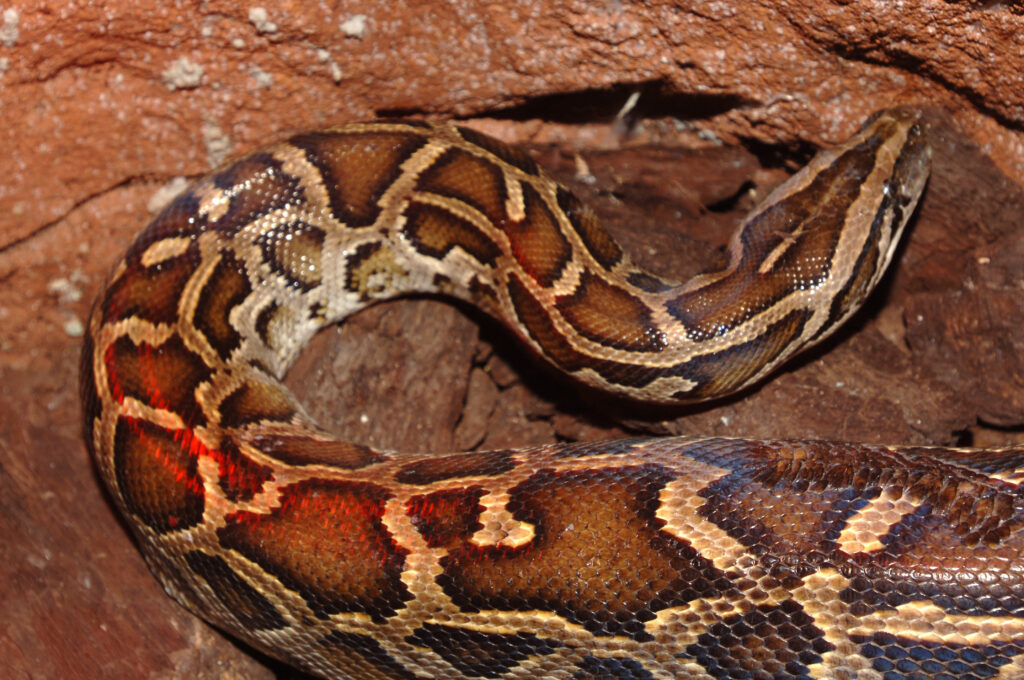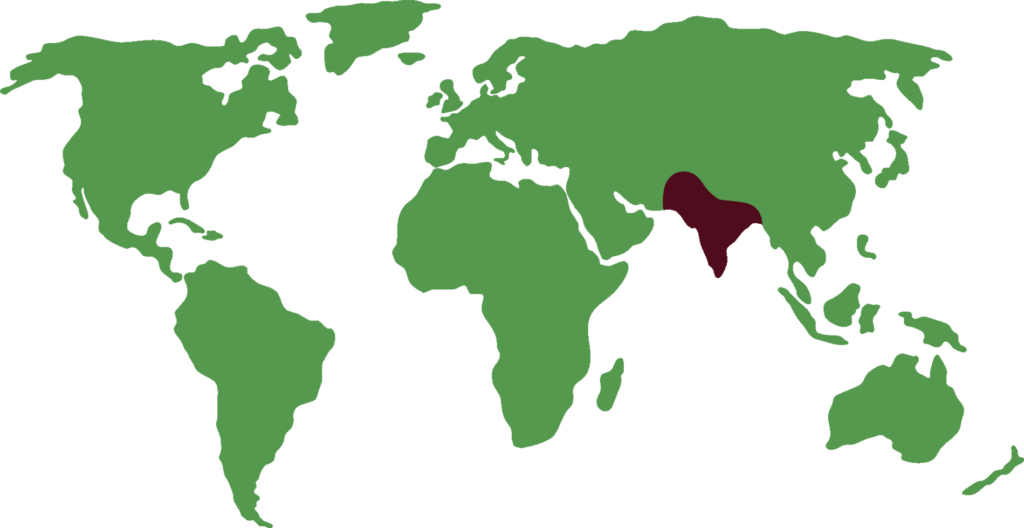INDIAN PYTHON
Python molurus

Longitud

4 m
PESO

60 kg
Longevidad

10 años
The Indian python, also known as the Indian rock python, is a constrictor snake that ranks among the largest snakes in the world. Its close relative is the Burmese python, with whom it bears a close resemblance, but the Indian python is smaller.
General characteristics
This python has whitish or yellowish colored skin with large spots varying from light to dark brown tones.
The head is triangular and relatively flat with a broad, upturned muzzle. The eyes are small, with straight pupils and irises with prominent golden flecks.
Feeding
They are carnivorous and feed indiscriminately on mammals, birds, reptiles and amphibians.
Behaviour
Indian pythons move slowly and are usually shy and rarely attempt to attack, even when attacked. They move in a straight line and the body is also positioned straight.
These animals are good swimmers and feel at home in the water. They can be completely submerged in water for a long time if necessary, but usually prefer to stay close to the shore.
Reproduction
They are oviparous. Depending on the size of the female, they can lay from 30 to 100 eggs. Incubation lasts between 50 and 90 days and the females spend a lot of time curled up covering their eggs to offer them protection against any enemy.
Threats
The main threat to this species is habitat degradation, although they are also hunted for their skin and meat.
Distribution
They are found in India, southern Nepal, Pakistan, Sri Lanka, Bhutan, Bangladesh and northern Myanmar. They live in a wide variety of habitats, including grasslands, swamps, rocky hills, forests and river valleys. What is important is that they have a permanent source of water.

Did you know?
They can swallow prey larger than their diameter because the jaw bones are not connected.
They prefer not to move after a large meal and go into fasting.
Indian pythons have excellent eyesight and hearing, allowing them to hunt with great accuracy, even in low light conditions.
Conservation status
